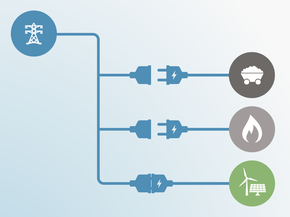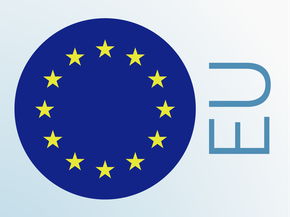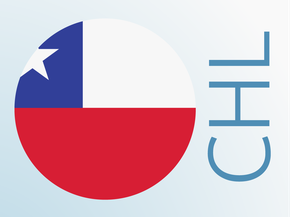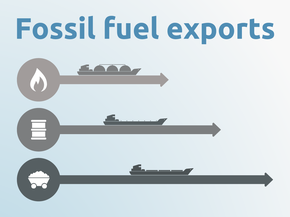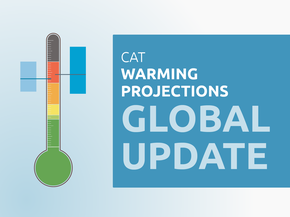Current Policy Projections
Economy-wide
The current policy projections indicate that Morocco’s GHG emissions in 2030 will be 150 MtCO2e excluding LULUCF (201% above 2005 levels and 471% above 1990 levels).
The Moroccan Climate Change Policy (MCCP) coordinates and aligns various sectoral and cross-sectoral national policies against climate change, mainly in the energy, waste, transportation, agriculture and forestry sectors. The MCCP is not additionally considered in the Climate Action Tracker’s current policy projection as the policy in itself does not enforce quantifiable measures or targets.
Energy supply
At the core of Morocco’s current emissions reduction efforts stands the National Energy Strategy, which aims to extend the share of renewable electricity capacity to 42% by 2020 and to 52% by 2030 (Government of Morocco 2016b). The National Energy Strategy mainly focuses on the capacity extension of wind, solar and hydro-electric electricity generation. The extension of wind, solar and hydro capacity by 2020 is estimated to reduce emissions by 11 MtCO2 annually (Government of Morocco 2016c). In 2015, Morocco’s share of renewable electricity capacity had reached 34% (Hamane 2016; World Future Council 2016). Morocco further increased the total installed renewable electricity generation capacity to 2,011 MW in 2016 (IRENA 2017), which represents an increase of additional 62 MW compared to 2015.
Under the Morocco Solar Plan (Noor), Morocco plans to extend installed solar power capacity (PV and CSP) to 2,000 MW by 2020, starting from 180 MW of installed capacity at the end of 2015. Contrary to the CAT assessment in 2016, which displayed an uncertainty range for the implementation of the Morocco Solar Plan, our current policy projection assumes the full implementation of Morocco Solar Plan due to recent progress to meet the 2020 capacity targets, as explained below.
After recent administrative restructuring, the Moroccan Agency for Sustainable Energy (MASEN) will take over the lead for the development of all renewable energy technologies in Morocco (Renewables Now 2016) from the Moroccan Electricity and Water Utility Company (ONEE). This includes the ongoing development of ONEE’s solar power programme for 500 MW by 2020, including the three large projects Noor-Tafilalet (120 MW), Noor-Atlas (200 MW) and Noor Argana (100 MW). As for the projects already led by MASEN, construction of the 4th phase of the Noor Ouarzazate complex (70 MW of final total of 580 MW) commenced in the 1st quarter of 2017 (PV Magazine 2017) and build-own-operate-transfer (BOOT) agreements were awarded for the first phases of the Noor Laayoune (80 MW) and Noor Boujdour (20 MW) projects in November 2016 (L’economiste 2017). Finally, MASEN announced the upcoming bidding process for two 400 MW plants (combined PV and CSP) in early 2017 (Reuters 2016), in addition to a call for expression of interest for the development of 400 MW at the Noor Midelt solar power complex which was launched in July 2016 (Renewables Now 2017).
Owing to these recent developments, it is assumed that the Morocco Solar Plan’s capacity extension targets until 2020 will be fully implemented. Some of the latest project developments already address capacity extension plans for the post-2020 period to achieve the 2030 capacity extension target. In our CAT assessment we have not quantified these impacts as the developments and successful implementation for the post-2020 period are relatively more uncertain.
As an extension of the Morocco Hydro-Electric Plan, Morocco plans to install an additional hydro-electric capacity of 775 MW by 2020, on top of the already-installed capacity of about 1,300 MW in 2010. As of 2015, Morocco had already installed 1,770 MW in hydro-electric capacity (IRENA 2016). Three plants with a total potential capacity of around 300 MW are further assumed to be developed until 2020, with El Menzel and Station de Transfert d’Energie par Pompage (STEP) Abdelmoumen already under construction. ONEE recently identified numerous sites suitable for locating small or micro hydropower plants (~100 kW to 1,500 kW), with a total potential capacity of around 300 MW (Federal Ministry of Economic Affairs and Energy 2016). Contrary to the CAT assessment in 2016, which displayed an uncertainty range for the implementation of the Hydro-Electric Plan’s capacity extension, we assume the Hydro-Electric Plan’s capacity extension targets until 2020 to be fully implemented due to these recent developments.
The Morocco Integrated Wind Energy Program aims to increase the capacity of national wind farms from 797 MW in 2015 to 2,000 MW by 2020 in two different tranches (Government of Morocco, 2016a).
Besides the extension of renewable electricity capacity, our current policy projection includes Morocco’s energy efficiency programmes in the building sector, public lighting and the industry sector. We note, however, that the industrial energy efficiency programme excludes large energy consuming industries (Government of Morocco 2016c).
Transport
Tramways in Rabat and Casablanca are currently being extended by 10km by 2020 and 45km by 2025, respectively. Similar extensions are planned for the cities of Marrakech, Fès, Tanger and Agadir, although actual implementation has not been started.
Further analysis
Latest publications
Stay informed
Subscribe to our newsletter
